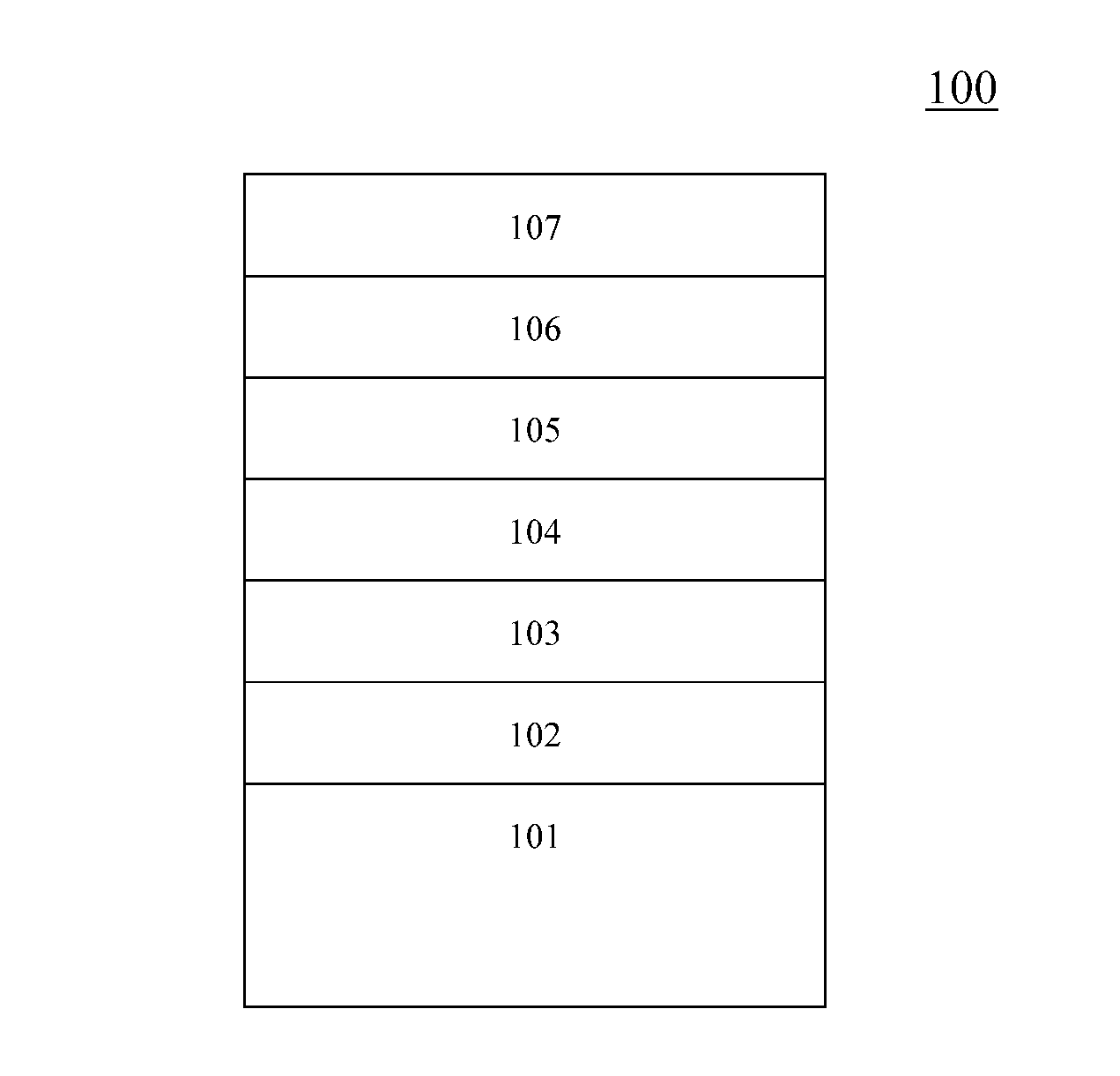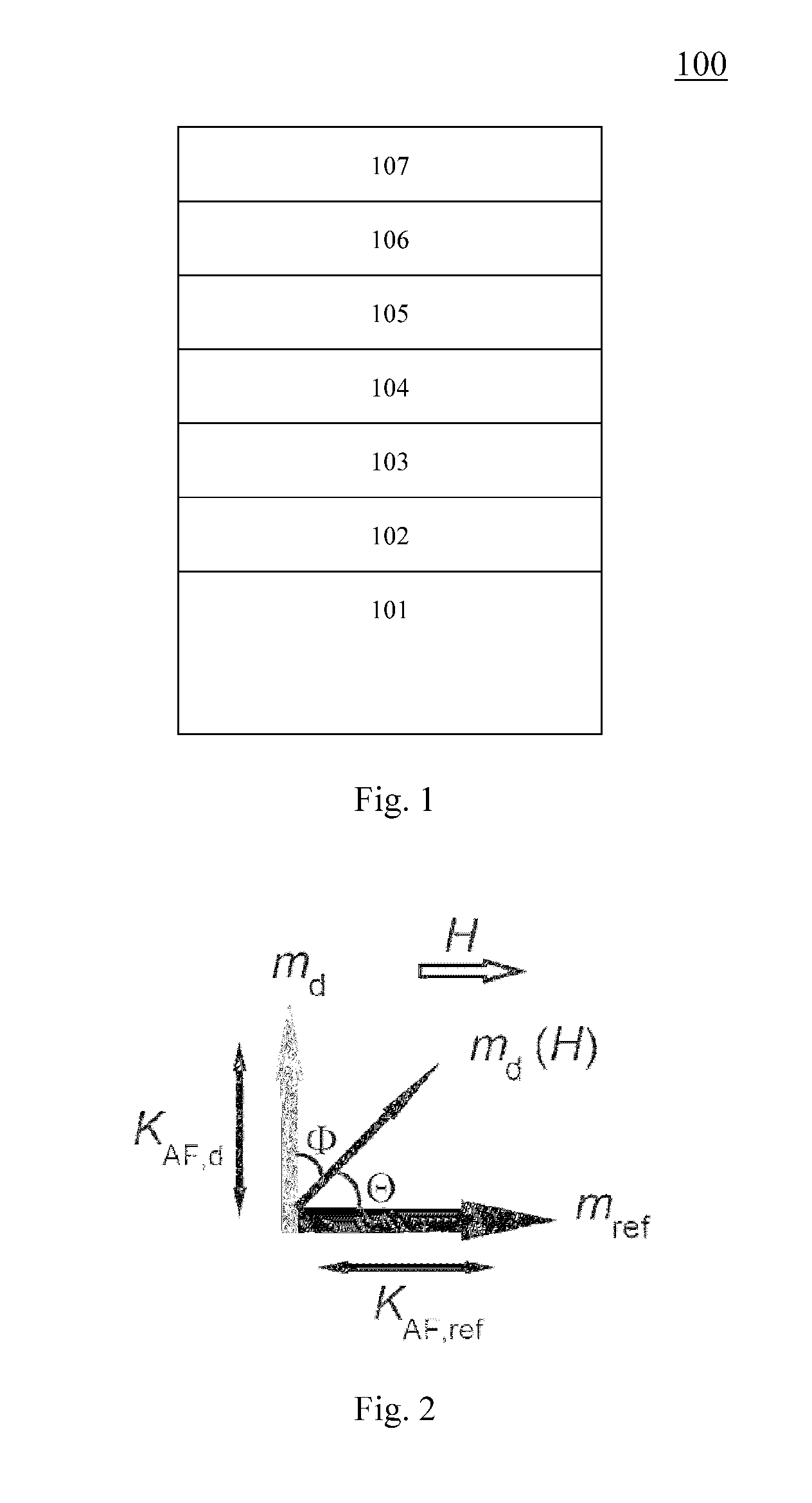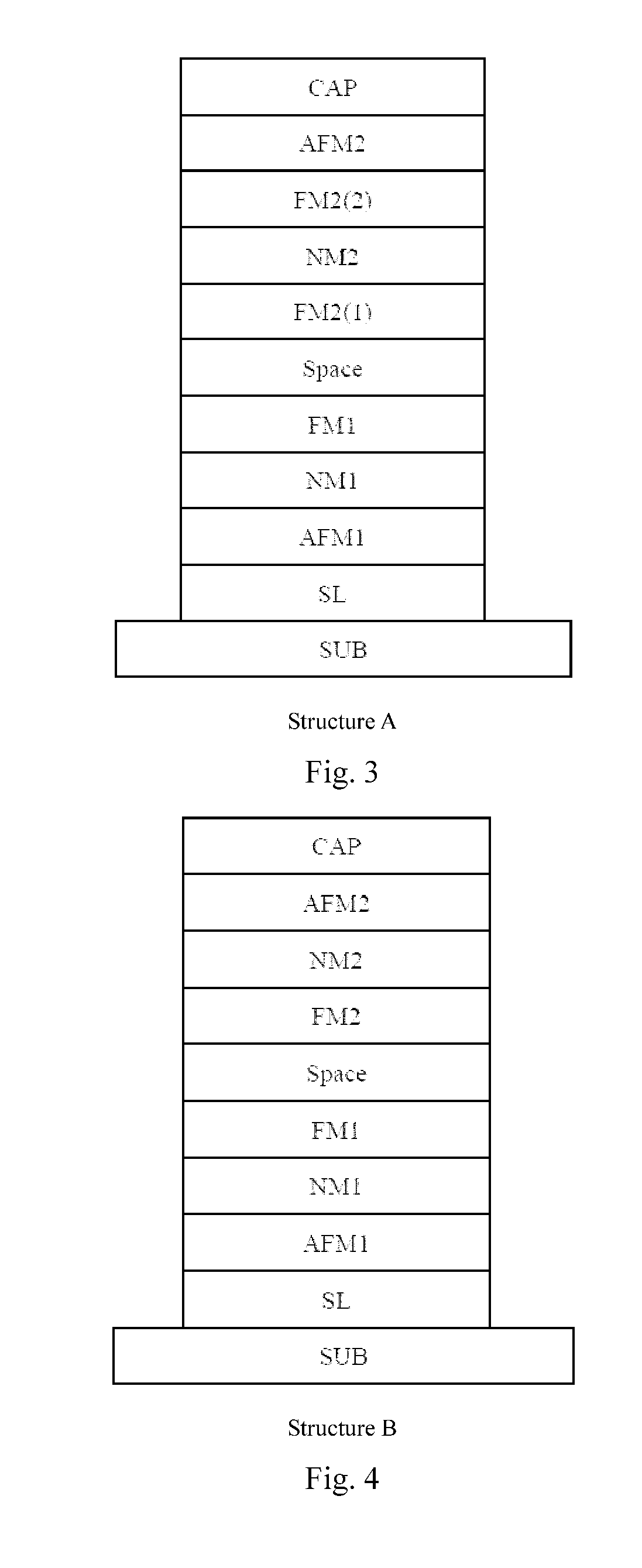Magnetic nano-multilayers for magnetic sensors and manufacturing method thereof
a magnetic sensor and nano-multilayer technology, applied in nanoinformatics, instruments, record information storage, etc., can solve the problems of inconvenient manufacturing of devices, and inability to meet magnetic field sensitivity in both materials,
- Summary
- Abstract
- Description
- Claims
- Application Information
AI Technical Summary
Benefits of technology
Problems solved by technology
Method used
Image
Examples
examples [UNK]
Examples 21˜26
[0071]FIG. 7 shows the examples 21 through 26 applying the structure E: SUB / SL / AFM1 / FM1 / Space / FM2 / NM / AFM2 / CAP. Example 21 illustrates the method in which the magnetic nano-multilayers of structure E are made. The steps include:
[0072]1) Providing a substrate (SUB), the Si—SiO2 with a thickness of 1 mm. Also, depositing a seed layer Ta (5 nm) / Ru (20 nm) / Ta (5 nm) on the substrate with a magnetron sputtering deposition device under the following conditions: a vacuum better than 2×10−6 Pa, a deposition rate of 0.1 nm / s and an argon gas pressure of 0.07 Pa during deposition.
[0073]2) Depositing on the seed layer (SL) a layer of IrMn with the thickness of 15 nm, which is the first antiferromagnetic layer (AFM1), under the following conditions: a vacuum better than 2×10−6 Pa, a deposition rate of 0.1 nm / s and an argon gas pressure of 0.07 Pa.
[0074]3) Depositing on the AFM1 a layer of CoFeB with the thickness of 2.5 nm, this is the first ferromagnetic layer (FM1), under the fol...
PUM
 Login to View More
Login to View More Abstract
Description
Claims
Application Information
 Login to View More
Login to View More - R&D
- Intellectual Property
- Life Sciences
- Materials
- Tech Scout
- Unparalleled Data Quality
- Higher Quality Content
- 60% Fewer Hallucinations
Browse by: Latest US Patents, China's latest patents, Technical Efficacy Thesaurus, Application Domain, Technology Topic, Popular Technical Reports.
© 2025 PatSnap. All rights reserved.Legal|Privacy policy|Modern Slavery Act Transparency Statement|Sitemap|About US| Contact US: help@patsnap.com



